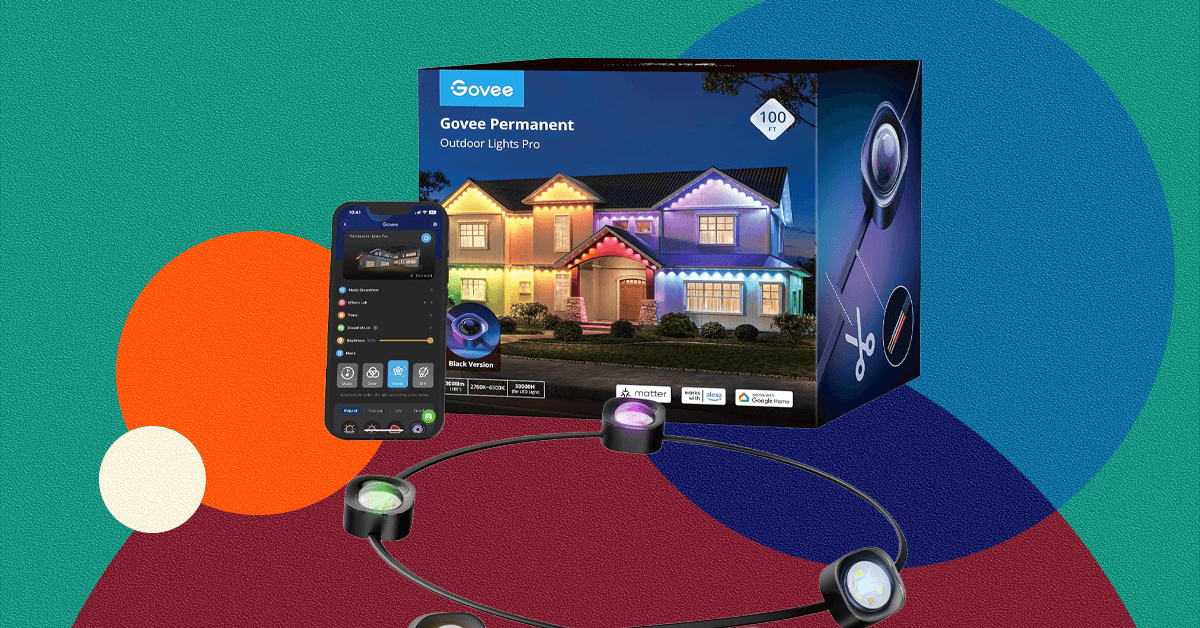Tech
Where does your glass come from?

The word “local” has become synonymous with sustainability, whether it’s food, clothes or the materials used to construct buildings. But while consumers can probably go to a local lumberyard to buy lumber from sustainably grown trees cut at nearby sawmills, no one asks for local glass.
If they did, it would be hard to give an answer.
The raw materials that go into glass—silica sand, soda ash and limestone—are natural, but the sources of those materials are rarely known to the buyer.
The process by which sand becomes sheets of glass is often far from transparent. The sand, which makes up over 70% of glass, could come from a faraway riverbed, lakeshore or inland limestone outcrop. Sand with at least 95% silica content is called silica sand, and only the purest is suitable for architectural glass production. Such sand is found in limited areas.
If the glass is colorless, its potential sources are even more limited, because colorless low-iron glass—popularized by Apple’s flagship stores and luxury towers around the world—requires 99% pure silica sand.
Glass production in Venice
The mysteries of glass production have a historical precedent that can be traced back to trade secrets of the Venetian Empire.
Venice, particularly the island of Murano, became the center for glass production largely due to its strategic location for importing raw materials and production know-how and exporting coveted glass objects.
From the 11th to the 16th centuries, the secrets of glassmaking were protected by the Venetians until three glassmakers were smuggled out by King Louis XIV of France, who applied the technology to create the Palace of Versailles’ Hall of Mirrors.
Venice was an otherwise unlikely location for glassmaking.
Neither the primary materials of sand and soda ash (sodium carbonate) nor the firewood of the medieval Venetian glassmakers were found in the city’s immediate vicinity. They were transported from the riverbeds of the Ticino River in Switzerland and the Agide River, which flows from the Austria-Switzerland border to the Adriatic Sea south of Venice. Soda ash, which is needed to lower the melting point of silica sand, was brought from Syria and Egypt.
So Venetian glass production was not local; it was dependent on precious resources imported from afar on ships.
Rising demand for low-iron, seamless glass
In the past few decades, low-iron glass, known for its colorlessness, has become the contemporary symbol of high-end architecture. The glass appears to disappear.
Low-iron glass is made from ultrapure sand that is low in iron oxide. Iron causes the green tint seen in ordinary glass. In architecture, low-iron glass doesn’t affect the performance—only the appearance. But it is prized.
In the U.S., this type of sand is found in a few locations, primarily in Minnesota, Wisconsin, Illinois and Missouri, where sand as white and fine as sugar—thus called saccharoidal—is mined from St. Peter sandstone. Other locations where it can be found around the world include Queensland in Australia and parts of China. Less pure sand can be purified by methods such as acid washing or magnetic separation.
Perhaps no corporation has popularized low-iron and seamless glass in architecture more than the technology giant Apple.
Glass has become fundamentally linked with Apple’s products and architecture, including its flagship stores’ expensive and daring experiments in architectural uses of glass.
Apple’s first showroom, completed in Soho in New York in 2002, showcased all-glass stairs that were strengthened with hurricane- and bullet-resistant plastic interlayers sandwiched between five sheets of glass. The treads attach to all glass walls with hockey puck-sized titanium hardware, making both the glass stairs and the shoppers appear to float.
The company’s iconic flagship store near New York’s Central Park is an all-glass cube measuring 32.5 feet (10 meters) on each side and serving as a vestibule to the store below. The first version was completed in 2006 using 90 panels, which was a technical feat. Then, in 2011, Apple reconstructed the cube in the same location, same size, but with only 15 panels, minimizing the number of seams and hardware while maximizing transparency.
Today, low-iron glass has become the standard for high-profile architecture and those who can afford it, including the “pencil towers” in Manhattan’s Billionaires’ Row.
Glass’s climate impact
Glass walls common in high-rise buildings today have other drawbacks. They help to heat up the room during increasingly hot summers and contribute to heat loss in winter, increasing dependence on artificial cooling and heating.
The glassmaking process is energy intensive and relies on nonrenewable resources.
To bring sand to its molten state, the furnace must be heated to over 2,700 degrees Fahrenheit (1,500 degrees Celsius) for as long as 50 hours, which requires burning fossil fuels such as natural gas, releasing greenhouse gases. Once heated to that temperature, the furnace runs 24/7 and is rarely shut down.
The soda ash and limestone also release carbon dioxide during melting. Moreover, glass production requires mining or producing nonrenewable natural resources such as sand, soda ash, lime and fuel. Transporting them further increases emissions.
Production and fabrication of extra-large glass panels rely on specialized equipment and occur only at a limited number of plants in the world, meaning transportation increases the carbon footprint.
Architectural glass is also difficult to recycle, largely due to the labor involved in separating glass from the building assembly.
Although glass is touted as infinitely recyclable, only 6% of architectural glass is downcycled into glass products that require less purity and precision, and almost none is recycled into architectural glass. The rest ends up in landfills.
The increasing demand for glass that is colorless, extra large and seamless contributes to glass’s sustainability problem.
How can we make glass more sustainable?
There are ways to reduce glass’s environmental footprint.
Researchers and companies are working on new types of glass that could lower its climate impact, such as using materials that lower the amount of heat necessary to make glass. Replacing natural gas, typically used in glassmaking, with less-polluting power sources can also reduce emissions.
Low-e coatings, a thin coat of silver sprayed onto a glass surface, can help reduce the amount of heat that reaches a building’s interior by reflecting both the visible light and heat, but the coating can’t fully eliminate solar heat gain.
People can also alter their standards and accept smaller and less ultraclear panels. Think of the green tint not as impure but natural.
This article is republished from The Conversation under a Creative Commons license. Read the original article.![]()
Citation:
Where does your glass come from? (2025, September 10)
retrieved 10 September 2025
from https://techxplore.com/news/2025-09-glass.html
This document is subject to copyright. Apart from any fair dealing for the purpose of private study or research, no
part may be reproduced without the written permission. The content is provided for information purposes only.
Tech
We Found the Permanent Outdoor Lights Worth Putting on Your Home

Weatherproofing. Every model needs a weatherproof rating to survive outside, so if you don’t see one, don’t buy it. There’s usually a lower rating for the control box compared to the rest of the lights, so be sure you can put that somewhere that’s a little less exposed to the elements. (As mentioned above, make sure you have an outdoor outlet, and check if there’s only one on a certain side of your home in case it limits your installation options.)
A range of installation options. You’ll want a set that comes with plenty of options for your own installation, including adhesive and drilled mounting options. What you need will vary based on your home design and materials; e.g., you’ll want adhesive for homes you can’t drill into. WIRED reviewer Kat Merck, who tested a couple different permanent lights, especially liked sets that had holders you screw onto your home that the puck-style permanent lights can slide onto.
Controls for individual lights. This should be a no-brainer, but some cheaper lights won’t give you this ability or have more roadblocks for customized control. Make sure you’ll have easy individual controls, or you might find yourself frustrated with the design results of these lights. It’s similar to design controls that you’d see on smart bulbs and smart string lights.
A great app. This goes hand in hand with the need for individual light control—a good app determines whether that and other features are accessible. Govee and Eufy, two of our favorite permanent outdoor lights we’ve tried, both have good apps that are easy to use and come with preloaded designs. These tech companies make more than just outdoor lights and make other favorite gear of ours, so they’re a good brand to trust to make a usable product and app. We also like Lepro’s more affordable lights, though the app had some extra hoops to jump through to get to controls, while Lumary’s app was a brutal experience for our tester.
Our Favorite Permanent Outdoor Lights
We’ve tested a handful of permanent lights on different homes, and have a few clear favorites. These options are all ones we recommend, provided your home exterior meets the constraints mentioned above.
This model from Govee has been one of our top picks in our smart Christmas lights review for a reason, and it’s still one of our favorite models at this price point for everything you’ll get with it. WIRED reviewer Simon Hill tested the 100-foot string that came with six sections, plus an extension code. He used adhesive and screw clips to secure the light pucks and cables, and found installation easy. This is a set that you can cut and splice, but he says that isn’t a task for the faint of heart. It has an IP67 rating, and an IP65 rating for the control box. The busy companion app has everything you could want within it: color controls, tons of Scenes (Govee’s lighting effects), scheduling abilities, and even a music sync option (though that felt a little gimmicky). There’s Matter support, and Govee can connect to Alexa and Google’s ecosystems for voice control. Simon says he’d like these lights to be closer together and the design to be a little more subtle, as you can see the cords pretty easily.
WIRED reviewer Kat Merck has tested two different sets of permanent outdoor lights on her home, and Eufy’s S4, incorporating RGB with both warm and cool whites, is by far her favorite. She’s found the app incredibly easy to navigate and find the features she wants, from preset holiday scenes (120!) and colors to schedules and brightness adjustments. There’s even an AI feature that lets you create customized light shows based on moods and scenarios. They were relatively easy to install on her home, which has nonstandard architectural features, as this set has extensions and can be cut and spliced. She says the lights aren’t quite as bright as the Lumary Max set below, but the brightness is adjustable. There’s also a radar motion sensor included, which she’s still testing. The Eufy S4 set also works with the Matter protocol, so it will work with Apple, Google, and Alexa’s smart home ecosystems. It’s got a waterproof rating of IP67 like the Govee set above.
Cync, which comes from appliance maker GE, makes affordable smart bulbs and other smart lights I like, so it’s not a huge surprise that I also liked the brand’s Smart Eave Lights. They were easy to install with 3M sticky strips already installed on the individual lights, and since my eaves are out of safe reach on my townhouse, I used the lights on my balcony railing with great success. One piece of the 100-foot set (it comes with four strings, plus an extension) was the perfect length to loop around my 9-foot-long railing. The set quickly connected to the Cync app, and the power cord is nice and long to make it easy to reach wherever your power outlet is. It has a waterproof rating of IP65.
If You Can’t Install Permanent Outdoor Lights
Not every home is a good fit for these types of lights. I haven’t yet found a permanent light set that works with my home, so here’s what I’ve used instead for a similar result.
These lights are photographed on a tree, but they have a weatherproof rating of IP44 (for both the lights and the power supply) to be used outside. I love how much you can customize these lights. You’ll use the app to take a photo of however you’ve set up your lights, whether that’s around the tree, around your balcony’s railing, or along the front of your house, and then you’ll be able to customize the lights and pattern based on how you arranged it. There are tons of fun light designs already in the app, and you can make your own. It’s a good option if you can only do string lights but want smart capabilities. These lights are also compatible with Amazon’s, Google’s, and Apple’s ecosystems. Twinkly also makes an icicle-style smart light string ($110), which I love using outside too; they’re currently hanging above my garage door.
More Outdoor Lights We’ve Tested
- Cync Outdoor Light Strip for $154: I was really hoping this would be a good solution for outdoor lights for my balcony, but this light strip is heavy and tall, and better designed to use to line a yard versus sticking onto the side of a railing. It comes with grass stakes to line it.
- Lepro’s E1 AI for $153 (50 ft): These permanent outdoor lights are completely sold out right now, but they are another more affordable option. However, they aren’t as cheap as Cync and you will have to get around the app’s AI to really get the most out of it.
- Lumary Outdoor Permanent Lights Max ($260 for 105 ft.): Lumary’s lights were frustrating and limiting for our tester. The app wasn’t intuitive or easy to use, and our tester actually had to have the power box replaced after she tried to connect the lights to a different phone. She liked how bright the lights were, and the fact there’s a physical remote, but the app, power box shutdown, and installation limitations compared with other sets (no splicing ability, installation recommended from the left) make this one we’d skip. Lumary has since released an updated version of its outdoor permanent lights, the Permanent Outdoor Lights 2, which includes a completely redesigned app, including the addition of custom-scene saving, but we haven’t tested them yet.
FAQs
What Are the Cons of Permanent Christmas Lights?
The only real downside to permanent Christmas lights, or permanent outdoor lights of any kind, is the cost. These sets usually cost significantly more than a light string, even the smart ones. That’s because they’re designed to last longer on your home, and the more expensive sets allow you to cut and splice the cords to perfectly fit your home instead of dangling strings and extra lights. It’s an investment, but one you can enjoy year-round.
Are Permanent Outdoor Lights Worth It?
Yes, because you’ll install them once and be good to go with every holiday in your future: Christmas! Halloween! Your fave sports team headed to a big championship match! Your kid’s graduation (or your own)! Similar to how smart bulbs can give you so many options inside your home, the possibilities are endless and something you’ll be able to use and enjoy year-round.
How Does WIRED Test Permanent Outdoor Lights? What Happens When We’re Done Testing?
WIRED tests permanent outdoor lights on the homes of our reviewers. We’ve tested these lights on three different homes in separate areas with serious weather: Washington state, Missouri, and Scotland. We’ve also tested a set in the more mild climate of Southern California. We install these on the homes themselves and leave them up for at least a few weeks, if not months and years (depending on performance), to see how they hold up. Our picks remain on our homes for long-term testing, as these lights are supposed to be permanent, and used sets are safely disposed of.
Power up with unlimited access to WIRED. Get best-in-class reporting and exclusive subscriber content that’s too important to ignore. Subscribe Today.
Tech
US nears universal adoption as North America leads 5G | Computer Weekly

The global wireless industry has continued its rapid expansion in the third quarter of 2025, with global 5G connections have reached 2.8 billion worldwide. And, six years after the mobile communications technology first arrived in the region, North America stands at the vanguard of the market, according to a study from 5G Americas.
The survey comprised a list of LTE and 5G deployments by operator and region, using deployment data from the industry trade organisation made up of telecommunications service providers and manufacturers, and with subscriber and forecast data provided by analyst Omdia.
In all, the analysis found that as of 15 November 2025, there were 379 commercial 5G networks deployed worldwide, including 17 in North America, alongside 707 LTE networks globally. 5G Americas said this infrastructure expansion was key to supporting skyrocketing demand for ultra-reliable, low-latency connectivity.
The study revealed that North America remains one of the world’s most technologically advanced 5G markets, achieving what the study said was “exceptionally high” adoption levels driven by strong consumer uptake and strong technological leadership, including enhanced 5G features that improve performance, efficiency and real-world network intelligence for consumers and enterprises alike.
In terms of 5G penetration, the US accounted for 341 million 5G connections against a population of 344 million – one of the highest 5G penetration rates globally. As a region, North America leads the world in 5G penetration, reaching 363 million 5G connections in Q3 2025, representing nearly 95% of the region’s population.
While Asia was market leader in absolute 5G volume – with 2 billion 5G connections currently – North America was top dog in per capita 5G adoption, significantly outperforming the global average of 36%. Globally, 4G LTE and 5G fixed wireless access accounted for 78.14 million connections at the end of Q3 2025, with a year-over-year (YoY) growth rate of 27%.
North America also continued to show strength in the internet of things (IoT), with 278 million connected cellular devices today. This figure is projected to rise to 459 million by 2030, a 65% increase that reflects growing adoption across manufacturing, logistics, utilities and consumer electronics.
Looking ahead, 5G Americas noted that non-terrestrial networks including satellite connectivity were emerging as a complementary layer to terrestrial 5G, extending coverage to remote areas, supporting resiliency during emergencies and enabling seamless service continuity across land, sea and air.
Globally, cellular IoT subscriptions are expected to reach five billion by 2030, signalling expanding enterprise and industrial uses. Artificial intelligence (AI) is becoming a key enabler in this growth, said 5G Americas, helping operators and enterprises to automate network operations, optimise traffic in real time and unlock smarter IoT applications at scale.
North America’s 5G connections are forecast to grow to 867 million by 2030, more than doubling from current levels. This growth is said to reflect a shift toward multi-device 5G environments, supporting advanced mobility, fixed wireless access and a broad array of connected platforms.
Additionally, fixed wireless access (FWA) has emerged as a growing driver of multi-device adoption, expanding high-speed broadband choice for households and small businesses, particularly in markets where fibre deployment is limited or still underway.
“The US and North America continue to demonstrate leadership in the global 5G ecosystem. High user adoption, broad device availability and sustained investment in next-generation networks position the region at the forefront of innovation as we move to early 5G-Advanced capabilities,” said Viet Nguyen, president of 5G Americas.
“Over the next few quarters, we expect to see improved uplink performance, advanced MIMO and integrated sensing and positioning that will further expand what 5G can deliver across industry, public services and immersive experiences, while accelerating progress on the path to 6G.”
Kristin Paulin, principal analyst at Omdia, added: “North American operators continue to invest in capabilities that will support enterprise transformation and next-generation services. These efforts are creating a robust foundation for future innovation and sustained subscriber growth.”
Tech
IT Sustainability Think Tank: Progess in decarbonisation made in 2025, but gaps remain | Computer Weekly

Reflecting on 2025, the path to decarbonising technology is becoming clearer, particularly with the publication of the UK government’s Carbon Budget Delivery Plan and Industrial Strategy policy papers.
More businesses understand the environmental impact of new technologies and there is a more concerted effort to convene capabilities to mitigate environmental consequences and improve the resilience of energy supply chains.
Artificial Intelligence (AI) is still the centre of the conversation, but the question remains as to how we can maximise the benefits of AI while mitigating the environmental consequences of increased dependence on the technology. This is where enabling deep tech companies to scale will be key.
As it stands, AI is responsible for 5-15% of datacentre power use and is expected to grow to 35-50% by 2030. Based on this increase, there are still challenges to solve around sustainable AI, particularly the impact of datacentres and the opportunity to leverage thermal energy to support the UK’s energy supply chain.
At Digital Catapult, we accelerate the practical application of deep tech to equip the UK to be future-ready. This includes delivering necessary interventions and programmes that ensure we take a responsible and sustainable approach to innovation, and address market gaps.
Gaps and opportunities for improvement
While research highlights environmental consequences of new technologies, gaps remain in how these consequences can be communicated to business owners, and how business leaders can in turn mitigate problems further down the line.
Many recognise the need to embrace deep tech innovation and integrate AI into their operations, but don’t yet know how to cut emissions and improve efficiency. In fact, research by Salesforce found that the most pressing challenge for sustainability professionals is a knowledge gap around AI and sustainability, while research from EY found that existing frameworks and legislation “often fall short” in guiding companies on AI-related sustainability.
This knowledge gap remains a pressing challenge for businesses, highlighting an area that must be addressed through appropriate intervention.
Business leaders are currently sitting on a breadth of opportunities to lead the way integrating and applying deep tech innovation while simultaneously decarbonising their operations. At Digital Catapult, we partner with businesses to achieve this, supporting organisations across major sectors and improving industrial supply chain resilience in the process. Research found that businesses that can effectively embrace energy-efficient solutions, leverage AI-optimised datacentres and achieve circularity in their e-waste systems, can reduce energy consumption and the costs that ensue by 40-60% without compromising on performance. This highlights the value of working creatively to solve systemic challenges while also pursuing growth.
The progress being made to drive decarbonisation
One of the best parts of my job is seeing progress across the board on AI offerings, applied by a range of innovative startups in clean energy, decarbonisation, and environmental monitoring.
These startups address a variety of innovation gaps and are helping to advance deep tech innovation that can be applied to solve a range of environmental challenges. Digital Catapult builds partnerships across the innovation ecosystem to enable deep tech companies to scale, bridging the gap between industry, government, academia and the startup community.
Through our programmes, we are seeing genuine progress being made in the application of deep tech innovation to build a future-ready UK economy, one that is built on clean energy and net zero emissions.
An interesting and cross-cutting area of decarbonisation efforts is the supply chain, with startups developing new solutions to improve UK industrial supply chain resilience across a range of sectors.
This includes startups considering how Scope 3 emissions can be tracked and monitored using AI, as well as others considering new ways to make supply chains more transparent, cut carbon emissions and reduce energy consumption and costs, informing and empowering decision-making amongst business leaders. These solutions have been underpinned by pushing the boundaries of deep tech innovation and practically applying it in industry.
The value of convening capabilities
One initiative that’s shaping conversations in the sustainability space is the AI for Decarbonisation Virtual Centre for Excellence (ADViCE). This initiative looks to develop AI offerings to support the transition to net-zero and has seen Digital Catapult, alongside Energy Systems Catapult and the Alan Turing Institute, partner for progress with over 40 policy, industry and startup thought leaders, including Octopus, SSE and the Department for Energy Security and Net Zero.
ADViCE exists to bring together an ecosystem of AI companies, industrial adopters, policy makers and investors to support, promote, and coordinate the adoption and diffusion of AI decarbonisation applications.
A recent webinar on sustainable AI, which can be found on the ADViCE Knowledge Base, is just one example of ADViCE’s work in IT sustainability and exemplifies the range of fascinating innovations taking place in the IT sustainability community as a whole.
As we look ahead, driving decarbonisation will rely on our collective ability to close the remaining knowledge and capability gaps.
Deep tech innovation offers a powerful pathway forward, not only to reduce emissions, but to reshape how industries operate, collaborate, and innovate. By continuing to convene capabilities, accelerate practical adoption and empower businesses with the tools and understanding they need, we can ensure progress doesn’t stall. With the right interventions and partnerships, the UK is well-positioned to lead the way.
Any readers interested in learning more about the ADViCE initiative, can learn more here.
-

 Sports1 week ago
Sports1 week agoAustralia take control of second Ashes Test | The Express Tribune
-

 Politics6 days ago
Politics6 days ago17 found dead in migrant vessel off Crete: coastguard
-

 Politics5 days ago
Politics5 days agoThailand launches air strikes against Cambodian military: army
-

 Entertainment1 week ago
Entertainment1 week agoSabrina Carpenter recalls ‘unbelievable’ experience with pal Taylor Swift
-

 Politics1 week ago
Politics1 week agoGen-Z battles to gain political ground after ousting ex-PM Hasina in Bangladesh
-

 Fashion1 week ago
Fashion1 week agoBangladesh’s economic outlook cautiously optimistic: Govt
-

 Fashion5 days ago
Fashion5 days agoGermany’s LuxExperience appoints Francis Belin as new CEO of Mytheresa
-

 Tech7 days ago
Tech7 days agoWIRED Roundup: DOGE Isn’t Dead, Facebook Dating Is Real, and Amazon’s AI Ambitions



















